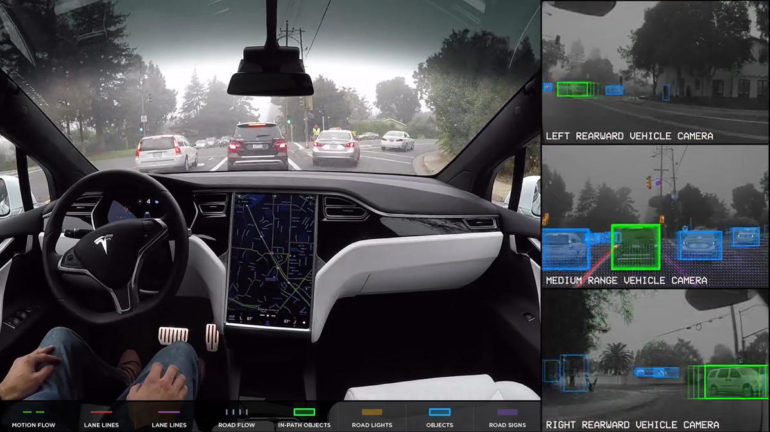A decade after Google launched its self-driving car project now known as Waymo, the idea of a fully autonomous car remains elusive – even for Tesla owners, some of whom got ‘full self-driving’ (FSD) in beta last week.
The FSD feature is part of Autopilot from Tesla, but the auto-maker’s technology remains a “distant second” to General Motors’ less-recognized Super Cruise feature, according to consumer advocate organization Consumer Reports.
Consumer Reports says Super Cruise is the best active driver-assistance system on the market for the second year running, followed some way back by Tesla’s vaunted Autopilot.
Overall, GM’s Super Cruise driver assistance system from the Cadillac CTS scores 69 points, followed by Tesla’s 57 points in the Model Y, and Ford’s more modestly named Co-Pilot, which scores 52 points in its Lincoln Corsair.
European and South Korean car makers rank lower than US brands. Audi gets 48 points, Hyundai and Kia gets 46 points – on par with Mercedes-Benz and Subaru – while BMW gets 44 points.
However, the ability for a vehicle’s systems to detect when a driver had become unresponsive is the key area where Tesla lags GM’s Super Cruise.
“Even with new systems from many different automakers, Super Cruise still comes out on top due to the infrared camera ensuring the driver’s eyes are looking toward the roadway,” says Kelly Funkhouser, Consumer Reports’ head of connected and automated vehicle testing.
“We’d like to see developers of these systems consider the additional step of steering the vehicle onto the shoulder of the road when a driver becomes unresponsive, and providing this feature even if the driver wasn’t using the system,” she says.
The Cadillac Supercruise system scores 9 out of 10 in Consumer Reports’ “unresponsive driver” test. It is followed by the Nissan/Infiniti ProPILOT Assist’s score of 7, while Tesla scores 6, along with Audi’s Driver Assistance Plus, BMW Active Driving Assistance Pro, and Buick/Chevy Driver Confidence.
Consumer Reports also criticized Volvo’s Pilot Assist, calling it out for frequently going “into a standby mode without alerting the driver by way of an audible warning”, along with Buick Driver Confidence, Mazda i-ACTIVSENSE, and Land Rover InControl.
The organization found that these systems, even when active, can easily allow a car to drift off the road if the driver isn’t paying attention.
While Tesla calls its $8,000 add-on to Autopilot full self-driving, it’s currently a package of features that require active driver supervision, as per its website, and “do not make the vehicle autonomous”.
Nonetheless, Tesla chief Elon Musk recently told investors that Tesla engineers did a “fundamental rewrite of the entire Autopilot software stack” so that the software now labels 3D video using the vehicle’s eight cameras while it previously only labeled single 2D images, according to Musk.
“The sophistication of the neural net of the car and the overall logic of the car is improved dramatically,” Musk said after driving an alpha version of FSD.
The Full Self-Driving feature is part of Autopilot from Tesla, but its technology remains a “distant second” to General Motors’ less-recognized Super Cruise feature.
Image: Tesla



